Land of 365 rivers’ is just one of the phrases that describe the beautiful Caribbean island of Dominica. But with so many rivers and freshwater catchments, these questions come to mind: why do some communities experience intermittent Water supply, why have others been unable to drink the water they receive and why are some unable to access pipe-borne water in 2023?
This report will illustrate and ascertain the state of the country’s freshwater distribution network. We will also look at what led to the challenges currently being faced by the relevant authorities and how we, as a nation, can improve and preserve our freshwater sources in Dominica, to avoid becoming victims of a looming crisis.
Climate Tracker was able to confirm that, to date, there appears to be a lack of enforcement by varying authorities on policies of water conservation, management, Financing and monitoring of Dominica’s freshwater sources and aquifers. The Water & Sewage Act (Cap. 43:40) serves as an overarching legislation for the uses and management of water.
According to the UN Environment Programme, the policy ensures the orderly development, use, and conservation of water resources, and provides the public with dependable supply and sewerage services. It provides a framework of rules for the management of the country’s diminishing stock of water resources and divests the government of the water supply and sewerage utility function and vests this function in a limited liability company, namely, the Dominica Water and Sewerage Company Limited (DOWASCO).
The Dominica Water and Sewerage (Catchment Area) Regulations (No. 13 of 1995) defines which areas along rivers, streams, and lakes form part of a water catchment area. It places restrictions on activities in such areas. However, operations such as timber extraction and logging are allowed in protected areas under certain conditions. Dominica’s sole potable water distributor, DOWASCO, has internal policies governing its operation. While the company is currently implementing elements of its Water Sector Strategic Development Plan, more needs to be done to ensure its water reservoirs remain at full capacity. (Company officials said that the Water Sector Strategic Development Plan cannot be made public.)
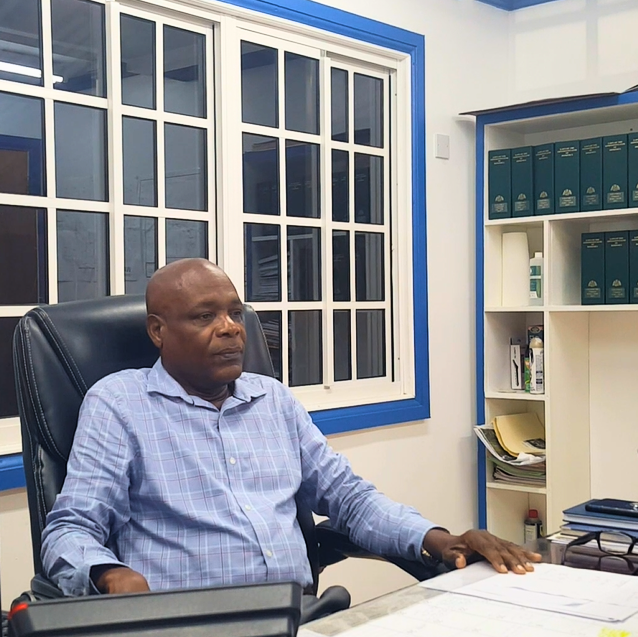
DOWASCO addresses security concerns related to watersheds
The sheds are concrete and isolated. For years, the locals have voiced concerns about security to protect the treated water, concerns shared by the residents of Dublanc and Platt Ma Pierre.
However, the General Manager of DOWASCO, Bernard Etinoffe, sought to address these concerns and conveyed that due to the current technology and protocols in place to detect changes in the quality of water for all its watersheds, a team is always on standby to shut down the intake, run tests, and provide treatment as needed in cases of contamination.
The DOWASCO Manager shared that the company runs tests on all of its intakes daily to ensure optimal quality water is provided to the public. Etinoffe said, “Remember, we have our water lab, you know. And we test the water on a daily basis, sometimes more than once a day in certain systems, so you know, we know which systems are vulnerable to a number of things. I’m not even talking about physical stuff by man and so on, but what about landslides and so on? We test our water on a regular basis, so you hear people from time to time say there’s this in the water and that. The minute you send people over, there is nothing.”
According to Etinoffe, the company has received threats from certain criminal elements to poison certain water intakes in Dominica. He assured the public that in every circumstance over the years, DOWASCO has prevented and reported such events and intentions to the police and will continue to do so.
For many years, DOWASCO has suffered with the issue of finance as it has operated at a loss for decades, purposefully absorbing the cost to make life easier for the majority of the population who benefit from the convenience of pipe-borne water. And the company has relied heavily on the generosity of the Central government and donor agencies.
But this selfless act has resulted in the company’s inability to provide on-time maintenance to its distribution network and security for its watersheds. Dominica has 10 major rivers identified by DOWASCO and the government of Dominica. They are the Indian, Picard, Layou, Roseau, Blenheim, Hampstead, Clyde, Pagua, Castle Bruce, and Rosalie rivers.
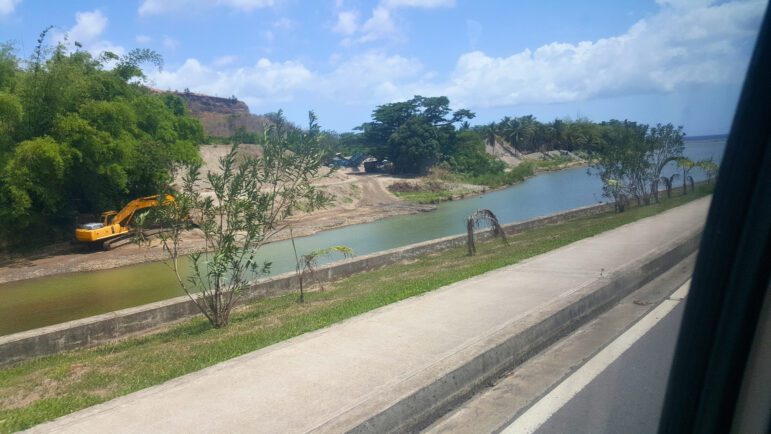
Is over-dredging the rivers affecting the water supply
One of the sternest advocates of Water Preservation in Dominica is environmentalist, agronomist, and former agriculture minister Atherton Martin. Martin has identified a significant reduction in water reservoirs across the island of Dominica over the past two decades. He blames government authorities and trucking companies for mining or dredging certain rivers of their boulders and Rock riffles, which exacerbates the man-made causes of freshwater loss on the island.
This has resulted in the destabilisation of the river’s channel form, thus increasing erosion and causing sedimentation. This is the case for the Roseau and Layou Rivers.
Another issue observed by the former minister is the careless removal of tree cover from the river banks, exposing the captured water to direct sunlight, interrupting the country’s hydrological cycle, and decreasing the overall freshwater supply.
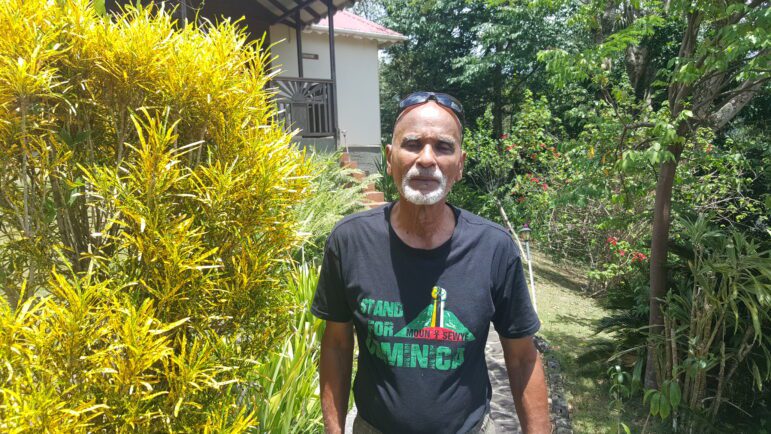
The link between global pollutants and climatic destruction
For decades, small island developing states (SIDS) have continued to bear the brunt of the effects of Climate Change, undoubtedly caused by countries with major manufacturers and major consumers of fossil fuel industries and products.
According to Martin, there is a direct relationship between larger countries that pollute the atmosphere with greenhouse gasses, increased weather-based disasters, and water scarcity in Dominica.
“It’s one system, so what the United States does with its air quality impacts us directly; what Central America does for instance with its sewage disposal or its disposal of agricultural chemicals or chemicals used in industry, if these are poorly disposed of they gonna get to us. So we need to be aware and find a way to partner, first of all with those next to us which is our region and then with those next to our region, which is Central America, North America, South America.” He warns, “If we don’t do it that way, we may very well end up doing the best practises here on water, soil and air, but it would come to not.”
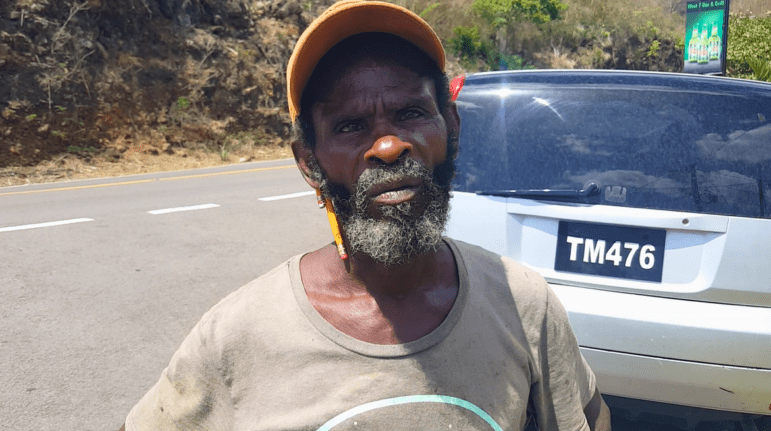
What happens when water supply decreases, catchments are not treated on time
Meanwhile, a resident of Bourne, Portsmouth, Dominica, Author Williams is experiencing one of those negative climatic effects. He explains that he has noticed a decrease in water supply over the years during the dry season. He also advises authorities to improve supply in the area, “In the dry season, we expect low-pressure water, yeah, that happens a lot!”.
Another resident in the community of Plat Ma Pierre, Fern Frederick, is experiencing month-long water outages from the catchment in that area. This has led to many in the community of Platt Ma Pierre depleting their monthly budgets to pay individuals in neighbouring communities to carry water for them. Speaking to residents in the community, they expressed what DOWASCO’s technicians told them, that “the water outages are as a result of inadequate water supply for the area.” This leads to sometimes as much as three water outages in a day.
“We have been going through a bad experience at Plat Ma Pierre due to our water. When they take the water, sometimes we stay is like a whole month. And then we have to pay the same bill- when you go they not deducting anything. Now the water- when you full your pail- I getting some green things like ‘Limu’ – the ‘limu’ like in the sea and stones, that’s what does be in the water, so the water is not good. I don’t know if the dam is being cleaned but they need to do something about it”, Frederick said.
During her interview with Climate Tracker, she also brought up the issue of water contamination, an issue that compelled her to report her findings to health inspectors who monitor the Portsmouth district some weeks ago. She was told that the issue would have been reported and investigated, a move that should have led to a team being mobilised to treat the water, improve its quality, and communicate to the residents how the issue was resolved. However, Frederick says that to date, the issue has not been rectified.
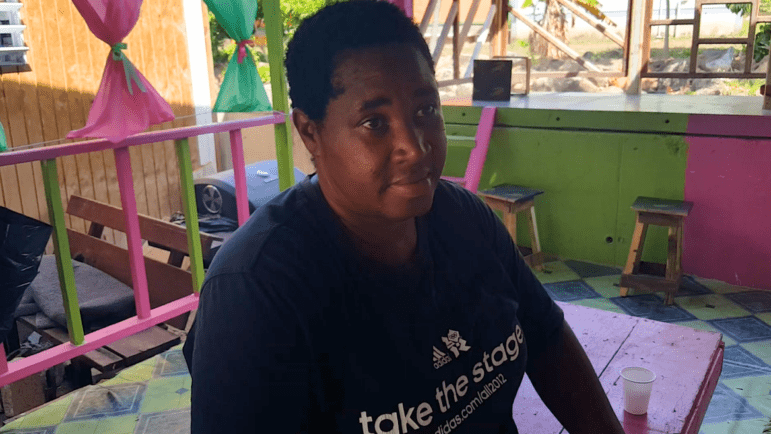
Well, I don’t know, but I personally did it, and when I received what I received, I removed the picture – I reached out to the health inspector, that’s ‘Gael’ for the Portsmouth District, and I showed it to her. She take it and she tell me she will get more information on that.”
Policy recommendations for central government
Climate Tracker was able to identify some policy recommendations that should be espoused nationally by the possible establishment of a government-run Water Resources Management Agency, which will provide oversight over all natural water sources on the island and will require all companies to obtain a licence to commercially use a water resource. DOWASCO’s Etinoffe suggested, “So the International thinking is that a Water Resources Management agency would have oversight over the Water Resources of Dominica.”
DOWASCO is not responsible for all the water resources on the island. There is a limit to the management of the waterways that DOWASCO uses. A view widely misunderstood by the Dominican populace, according to officials.
Atherton recommends that increased funding for the Forestry Division to improve its reforestation and monitoring programmes will aid in improving the country’s freshwater capacity. “The Forestry Division is a little division, but it has responsibility for 300 square miles of land mass. That’s a great contradiction. And so my recommendation for policy would be to fix that.”
He admonishes the Central Government to “Make the care and management of the resources on which the country’s life depends, make that a priority. Reflect it in its budget, reflect it in its staffing, reflect it in its importance we give to the departments that deliver on forestry Management and Forestry care and Expansion.”
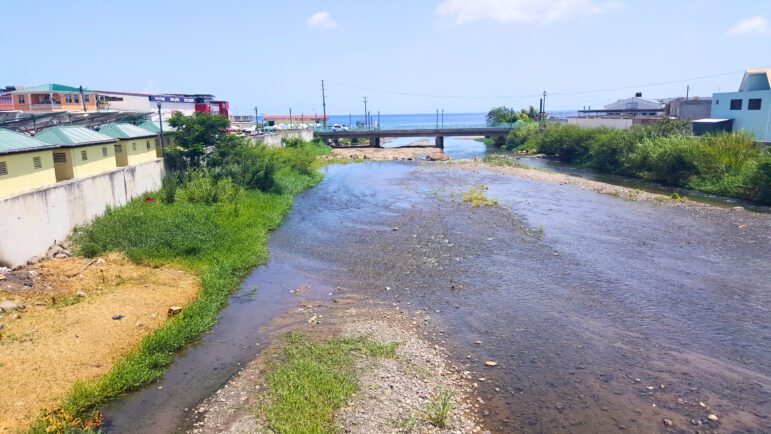
Looking ahead: what needs to be done
Dominica in the recent decade has lost a lot of its water capacity; however, it is clear that acts of environmental pollution committed by our regional neighbors have also contributed significantly to the overheating of the global atmosphere, thus leading to the loss of Freshwater resources in nations like Dominica, further interfering with the island’s Hydrological Cycle. This creates cause for increased funding to be provided by these larger consumer-based countries (US, China, India, UK), for Climate change initiatives, adaptation practices and mitigation projects in Dominica.
Locally, the adoption and implementation of new policies from DOWASCO’s ‘privately kept’ Water Sector Development Plan, which includes the strong recommendation of a ‘government-run’ water management agency, must be done. The proposed agency will be solely responsible for the Protection, monitoring, maintenance and preservation of all water resources on the island – and would provide oversight and licensing to companies like Dominica Electricity Services Limited – DOMLEC and DOWASCO that seek to use the water resource for their operations.
In the short term, DOWASCO has begun efforts to access some of the country’s aquifers as a means of improving water supply across the island nation.
Greater enforcement and creation of ‘water preservation laws’ should be treated as a priority by government authorities in Dominica. There is also cause for increased inclusion of expert minds like Atherton Martin in the drafting and establishing of better management policies regarding the country’s freshwater sources, only then will Dominica stand a chance of preserving and retaining what is becoming the world’s top ten most important resource, freshwater.
This story was published by CIJN with the support of the Caribbean Climate Justice Journalism Fellowship, which is a joint venture between Climate Tracker and Open Society Foundations.